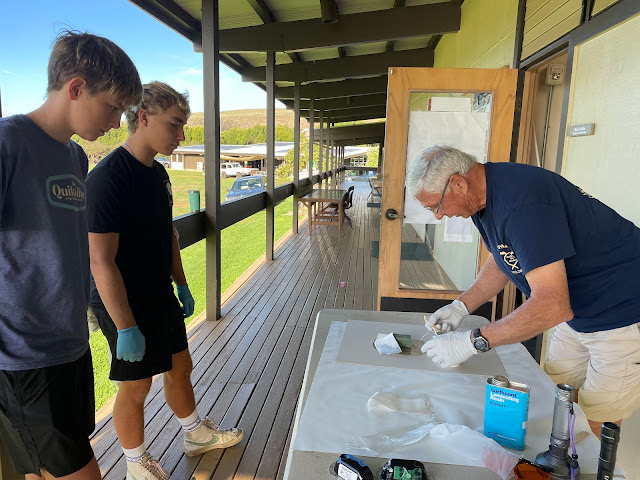Practicing Sat Tag Attachment

Link to Introductory Page 11/28/2024 Laura Jim and Marc Rice meet with Luke and Zane to go over the process of attaching a satellite tag. We attached a mock tag using UV activated polyester resin and fiber glass cloth so that everyone understood what we need to do when we find a nesting hawksbill turtle in Vanuatu. When we are out in the field attaching a tag it will be night time (typically 1200-0100 h), cold, dark and possible raining so we need to know what we are doing and how to do it while making sure the turtle is OK and the tag is securely attached before we release the turtle - It all requires a strong team effort. Below are some images taken by Laura during the training. Practicing layering fiberglass cloth with Polyester resin. Fitting the fiberglass cloth to the contours of the tag and the turtle's shell requires a little cutting and fitting expertise. Applying the resin to the cloth requires that all air bubbles are removed and that the cloth is totally impregnate